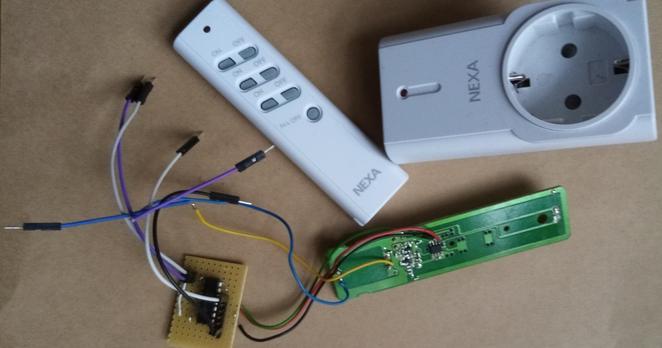Most consumer remote controls operate using infrared light. This works well assuming the piece of equipment has a line of sight to the remote. But if you have, say a receiver in a cabinet or closet, the IR remote signal can't reach the sensor. Some equipment has remote receivers that you can leave poking out, but it is still not very handy. That's why some equipment now uses RF remotes. [Xtropie] used a pair of inexpensive 433 MHz RF modules to convert an IR system to RF. You can see a short video about the project below.
We might have been tempted to simply put an IR LED on the receiver so it could feed IR into the device sensor, but [Xtropie] took a different approach. He found the IR sensor and tied the RF receiver directly into its output. It seems to work, but we probably would have removed the IR sensor to make sure there were no conflicts.
In fact, if you removed the sensor, you could reuse it and connect it to the IR transmitter. It wasn't clear how you could easily package the RF transmitter and the remote. But it struck us that you could wire the transmitter directly to the LED output and avoid the IR sensor at all. If there isn't space in the remote case, maybe a 3D printed extension would do the trick.
Of course, nothing stops you from using RF remotes with your own projects. Of course, another way to go RF remote is to leverage WiFi.
